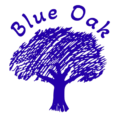What Is An Elevator Statement
What is the most important next step once you have an idea for a company? Start with the development of the product? Start with the marketing strategy. Or is it getting feedback from others about the idea you have? I would suggest the latter is the best next step. So, how do you go about getting solid feedback on your idea?
That’s where the elevator statement comes in. What is an elevator statement? Let’s say you are in an elevator with someone, and they ask, “So, what do you do?” You have only a few minutes to deliver a clear message about what your company does. That is the elevator statement. How would you go about doing this very efficiently?
The Three Parts Of An Elevator Statement
An effective elevator statement has three parts: the hook, the best solution, and the call to action. Let’s take a look at each section.
The hook is the first sentence to draw your audience’s attention so they are engaged. You want the reaction that segway to the next section. The goal of the hook is the elicit questions like; “How do you do that?”, “What do you mean by that?” or “Can you tell me more?”. If you do not get that reaction, it’s time to revise your elevator statement. The entrepreneurs often put what they do in the first section, not the hook you need. You don’t need to say what you do right up front. It would be best to have something that would catch the other person’s attention quickly. Think less of technology and more of a solution.
For example, instead of saying, “We have the fastest product in the market.”, say something like, “Our solution allows our customers to save over $1 million a year in labor costs.” When you get their attention, you can explain how this could happen.
Next, you will have to clarify what you said in your hook. You need three parts to this. First is the problem you are solving for your customers. In the above example, you can say, “Most of our customers waste up to $1 million in labor costs using a slow system that bogs down the entire operation.” The following sentence should explain why you do this better than anyone else. “Our system provides 50% more efficiency for our customers, saving money.” The last sentence should emphasize why no one else does this better. “Our unique ASIC with several patents pending makes it near impossible for our competitors to offer similar performance.”
Now in four sentences, you’ve just explained what you do most efficiently.
The last part is the call to action. If you are talking to a potential customer, a venture capitalist, or a partner, you need to get on their agenda as soon as possible. Just handing out a business card will not leave a lasting impression on them. You must ask if you can meet them soon for further discussion. Unless the business card has your photo on it, often after collecting 10-20 business cards during an event, it’s difficult to remember who they spoke to.
I prefer LinkedIn or other methods rather than just a business card. LinkedIn has a photo on the site, associating you with what you discussed using the face. This method also helps with remembering the company name and what you do.
This entire conversation took less than 5 minutes, but you provided a compelling message to potential prospects.
Practice, Practice, Practice
An effective elevator pitch does not happen overnight. It can take 30-50 reiterations or more to get it right. The vital thing to do is to observe their reaction after the hook. If they look like they are searching their brain to comprehend what you said, you are on the right track. The person often breaks eye contact to think, so this could be the clue. If it doesn’t work, change your elevator statement until you get the desired reaction.

